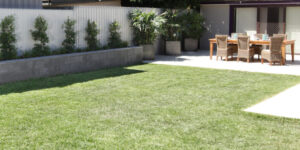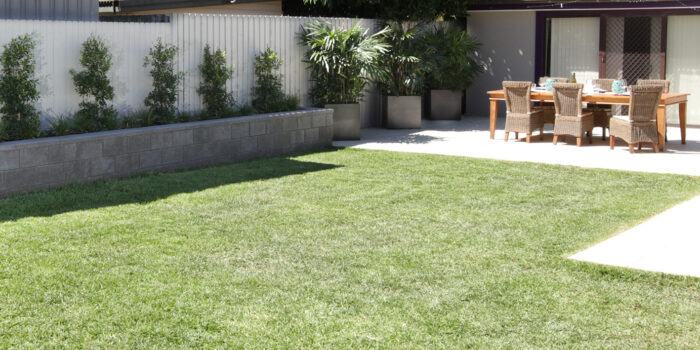Landscaping Designs
There are many landscape design styles that homeowners can choose from. Some are more formal, like English gardens or Japanese gardens. Others are more natural or even rustic.

Unity describes how different parts of the landscape relate to one another. This is accomplished by using a theme of colors, forms, or textures. So, if you need some help from the experts, you can contact Landscaping Harrisburg PA.
Plants are the foundation of any landscaping design. A well-designed landscape can increase the value of your home and create more living space for you and your family to enjoy. It can also help reduce heating and cooling costs, improve your health, and increase the number of beneficial insects that visit your property.
A great landscape design will provide a variety of plants to add color, contrast, and texture to your yard. In addition, it should include some hardscape elements to provide structure and interest. The size and shape of your garden, patios, paths, and fences can affect how your landscape looks. A good way to get ideas is to look at pictures of different gardens or homes with beautiful landscapes.
Landscape designs use concepts like unity, simplicity, balance, and sequence to create harmony and order in a garden or outdoor space. While these terms are often associated with artistic expression, they are just as important in landscape design. Unity refers to how the various elements of a landscape work together to convey a theme or mood. It can be achieved through repetition, such as by lining up three identical pots along a wall or placing similar flowering plants in a row.
The use of different textures, colors, and plant shapes can also promote unity. For example, planting a mix of shrubs and perennials with showy flowers can provide a variety of color throughout the year. Plants with contrasting colors, such as red flowers and blue foliage, can complement each other.
The design of a landscape can be symmetrical or asymmetrical, depending on the desired effect. For instance, a mass planting of shrubs or trees can visually balance a chimney on one side of a house. Landscapes can also incorporate the concept of perspective, which draws attention to certain focal points and creates depth.
Borders
Landscape borders, like natural ones such as water bodies or mountains, can define a space and help guide the viewer’s gaze. They can also act as a framework or backdrop for other landscape elements such as grass, trees, and plants.
Borders can also serve a practical purpose by helping to stabilize soil on sloped properties or as a buffer to prevent wind and cold damage to sensitive plantings. A well-designed landscape will consider the specific climate, soil type, and topography of a property. These factors influence the plant selections and landscaping materials used.
A thoughtful landscape design will utilize lines, grass, paving, stone, stairs, and other elements to create a beautiful and functional outdoor space that is unique and inviting. For example, a paved pathway that rounds an inner grass circle and leads to a sitting area with a pergola transforms a backyard into a relaxing sanctuary. An old-style fountain surrounded by low hedges and gravel creates another beautiful focal point to attract the eye.
The element of line refers to the way in which a viewer’s eye moves unconsciously through a landscape. It can be governed by the placement of plantings, their form and structure, and the scale of their relative size. For instance, the patterned repetition of the same tree form throughout a yard creates unity and harmony. Color, on the other hand, can be utilized to create contrast and drama. Flowers of warm and cool colors can be grouped together for a unified look, or they can be mixed in a random fashion to achieve a more eclectic style. The design of a sloping landscape can be improved with the addition of rock gardens, which are easy to maintain and provide a contrasting texture to lawns.
Pathways
Pathways can create visual and functional links between different parts of your garden. They can guide visitors to a seating area or an outdoor kitchen and provide access to a garden shed, pool, or summer house.
The best type of path for your space depends on its purpose and location. Straight, wide paths make a powerful and formal statement; curved ones are more playful and encourage exploration. If your path is on a slope, a winding design can create a dynamic relationship between the landscape and the path, making it look like a natural extension of the surrounding garden.
When selecting a material for your pathway, consider its color, texture, and durability. Dark red brick pathways have a classic, traditional feel that blends beautifully with traditional landscaping styles. But a whitewash or light stain gives them an adaptable, modern appearance.
Pavers are a popular choice for pathways, and there are a vast variety of sizes, shapes, colors, and textures to choose from. This versatility means that you can choose a style that suits your garden, whether it’s contemporary, classic, or modern.
Unexpected materials give your pathways a distinctive look and can be an excellent way to introduce color and texture to your garden. Here, reclaimed glass bottles are placed halfway in the soil on either side of a pathway, creating a whimsical and textural element.
Another good option is a gravel walkway. This combines the benefits of both grass and paved surfaces and is particularly suitable for uneven or boggy ground. It is also low-cost and easy to maintain. If you’re concerned about mud or gravel dust in your shoes, try a wax polymer surface. This innovative mixture of decomposed granite and wax produces “a dustless, durable, and aesthetically pleasing” surface, says Urdesignmag.
Water features
Water features add visual appeal and a sense of tranquility to any landscape. Whether you are designing a home garden or a commercial space, water features can make your property stand out and create a memorable experience for visitors and employees. They have been a part of the most beautiful landscapes for thousands of years. They add a sense of wholeness and a connection to nature, which can be difficult to achieve in an urban setting.
Ponds and water gardens are popular additions to residential landscaping designs. They are often surrounded by lush vegetation to enhance the multisensory experience. They also provide a habitat for birds, fish, and other wildlife. The calming sounds of running water and the soothing textures of plants can help reduce stress.
If you are looking for a water feature that requires little maintenance, consider a natural pond with a filtration system. These ponds blend seamlessly with most landscape designs and can be enhanced by waterfalls, fish, or water plants. You can also choose to negate the pond for a more modern look with simple wall fountains or fountains made from pots, stones, and stumps.
These low-maintenance water features recirculate the water and do not need to be topped up with fresh water as frequently as a pond. However, they may require a little more care to keep them free of debris such as leaves, pine needles, or twigs.
For a more whimsical design, try a water feature with a special theme, such as a fountain that sprays flowers or has a man’s face shooting water. The possibilities are endless, so be sure to consider your personal taste when choosing a water feature.
Lighting
As any photographer, filmmaker, or theater director will tell you, lighting is crucial to composing a scene. And in landscapes, lighting shapes people’s experience of the outdoors at night, ensuring safety, establishing focal points, and setting a mood that encourages people to remain outside and enjoy themselves deep into the evening hours.
In landscapes with hardscape features like walkways, patios, and retaining walls, grazing the surface of these structures with light can create dramatic shadow plays that accentuate their textures. This is especially effective if the grazing is done with lights that are intentionally conspicuous, such as path and deck lights.
Lighting also adds visual drama by illuminating the silhouettes of trees at night. This technique, known as “uplighting,” works best when used in combination with other types of light, such as spotlights that enliven the overall form of a tree or structure. When used alone, uplighting can overwhelm a landscape with too much light.
As with plants and other softscapes, lighting can create a sense of cohesion and unity in a landscape by expressing a consistent style. A consistent look is important in any design, but it becomes even more so when different elements work together to form a harmonious whole. To achieve this, choose fixtures that share a similar look and feel, and be sure to pay close attention to the color temperature of your landscape lighting. Warmer colors (5000K or above) work better with oak trees and brown siding, while cooler whites (6000K and below) play well with gray exterior stone. The color of your home’s facade should also be taken into consideration.


